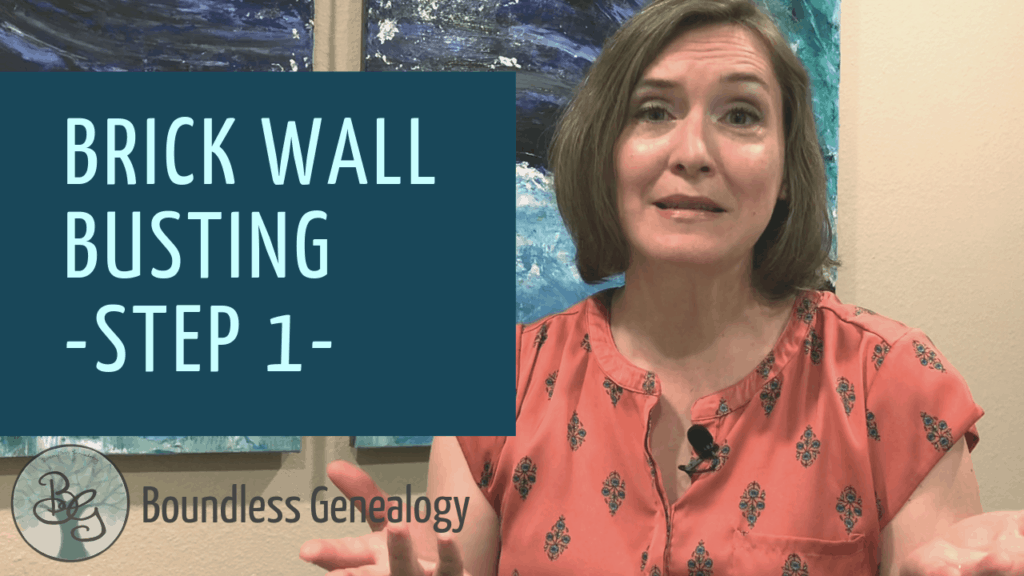
Do you have a brick wall ancestor? That one elusive person who will not be identified, no matter how long and how hard you have tried to search for them? Well, put on your hard hat, because we are going to start busting brick walls right now!
Watch This Episode, or Continue Reading Below
This video is part one of a multi-part series on how to bust through genealogy brick walls and discover the identity and life story of even your toughest, elusive ancestor. So let’s get going with Step 1 – Review Previous Research.
Gather What You Have
Step 1 of Brick Wall Busting is to review all your previous research on this ancestor… and not only them but on all their family members as well. By this I mean any known spouse, child, sibling, or parent. You never know where the clue may be found that will break the case wide open.

You have most likely been searching for this ancestor for a long time — maybe even decades. So your information about them may be scattered in many locations and formats. Perhaps you have paper notes or documents on this person from when you first started your research. Then you may have a profile for them on multiple online trees.
If you are like me, you attached some records to the person on one online tree, but another online tree has different records, depending on what you could find in your searches on that site. You have a copy of them on your family tree computer software and digital files in a folder on your hard drive.

Begin by gathering all these resources about this ancestor and their family members into one place. You may even remember other documents you forgot you had during this part of the process.
Once you have gathered everything, your next task is to clear your mind of all previous conclusions and assumptions made about this person.
Re-Evaluate Everything
Next you are going to re-evaluate each document and piece of information about this ancestor with fresh eyes.
I encourage you to write down the facts and clues contained in each document. (Other videos on the Boundless Genealogy video channel can help you learn to do this.) Make sure to look over the whole document. Don’t leave anything out. Even the smallest clue can help you make a breakthrough later on.
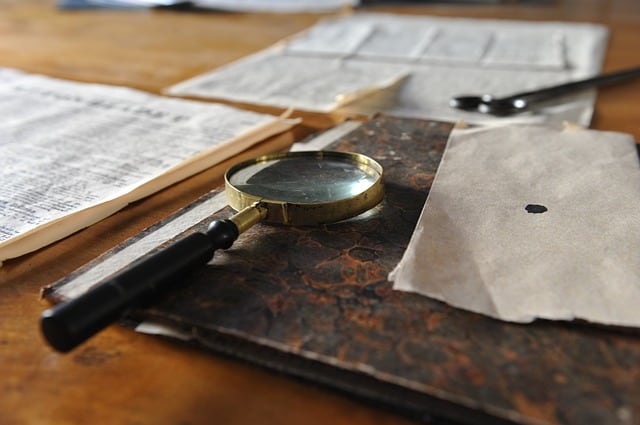
This writing you will create becomes your ONE PLACE that all the information on this challenging ancestor can be found for future reference.
When working on a project like this, after you gather all the documents you already have for this ancestor,
Your Research Report
Begin with the first record of the ancestor… not the first chronologically, just the first in the “stack” of items collected from all the different places they were held… and work through each one.
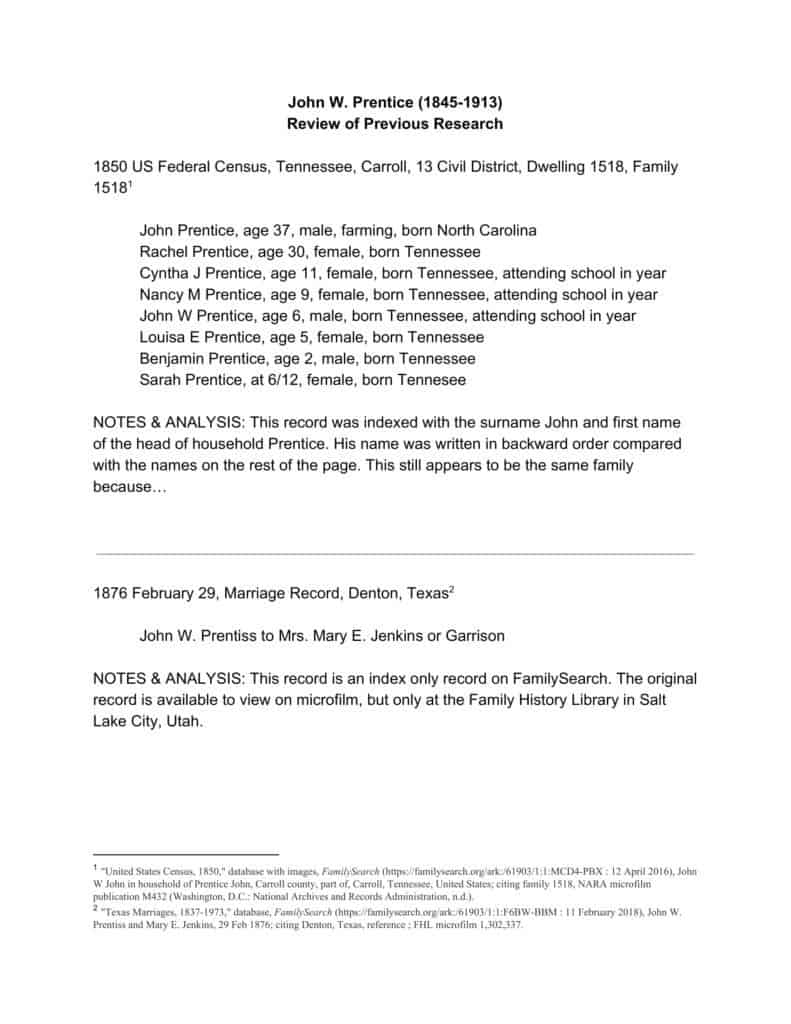
What is the Document?
First, determine what the document is. Is it a transcript of an old interview? The death certificate of a child of the ancestor? Write down what you know or can determine
Your citation can also be as formal or informal as you would like it to be. Make it useful by writing down enough information that allows you to identify which record you are writing about in that section and be able to come back to it later.
Transcribe the Document
Next, transcribe the document word for word into the report. For extra long documents, an abstraction or summary will do, as long as you take care to include all the important information and do not change the wording or inject your own interpretation into it.
This is an important step because then you have an exact copy of what that document does and does not say. I am careful not to put any additional commentary, corrections, or assumptions into this transcript.
Notes and Analysis
After the transcript, start a new paragraph that is LABELED Notes & Analysis and this is where you put your own notes, corrections, assumptions, and analysis of what was in the document.
That way, when you come back later to see what was really in the document and what was your own thought, it is clearly defined and easy to tell the difference.
Future Research Ideas
As you analyze the document with fresh eyes, you may get ideas of other places you can search for this ancestor. That is an important part of this re-evaluation. Add these ideas to your notes and analysis section, or create an entirely new section at the end of the report for these future research ideas.
HOWEVER, do not act on these research ideas at this point! Stay on task with re-evaluating everything on this brick wall ancestor before you proceed with further research. The methodical, disciplined way you carry out this process will make a difference in your success on this project!
Process the Next Document
Then make a new section in the report and begin the process with the next record of the brick wall ancestor. W
Is it Worth the Effort?
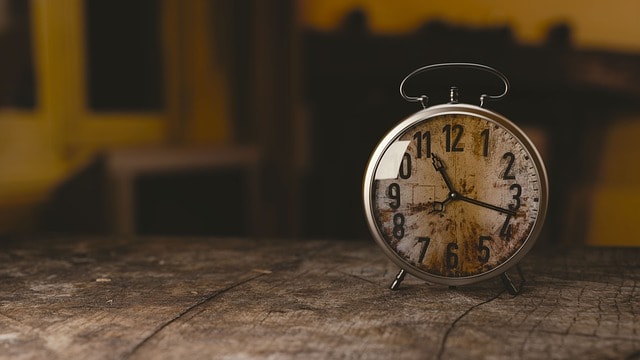
Is this time consuming and sometimes tedious? Sure. But so is performing endless, fruitless searches for an elusive ancestor. And this is the important first step to break down that brick wall and finally make progress in your search! I promise it is worth the effort!
Pin for Later

See you next time,
Melissa





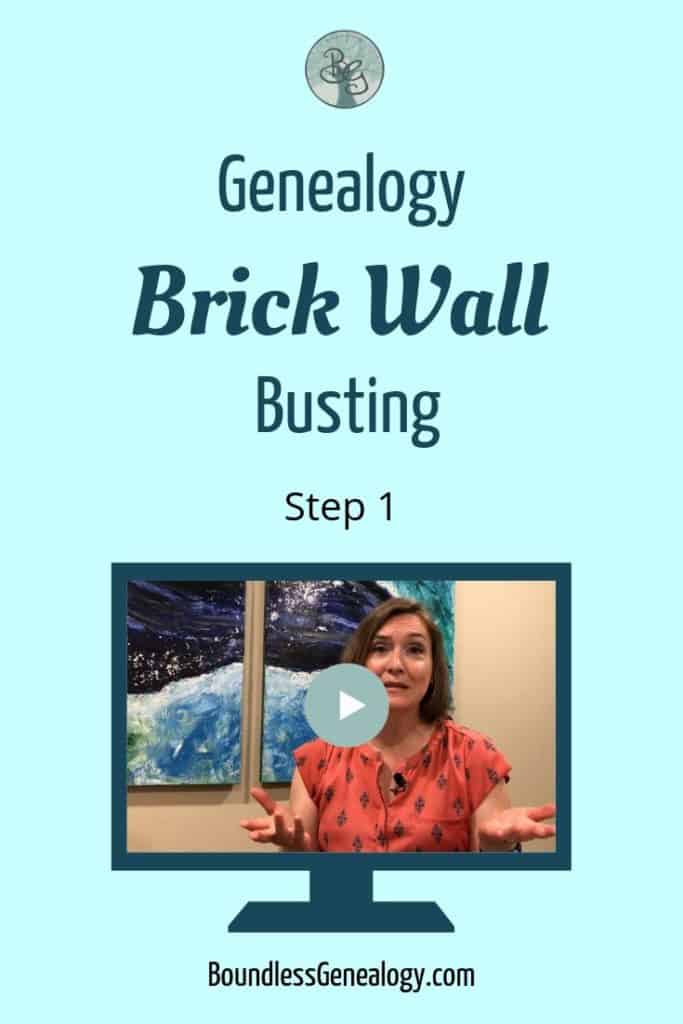

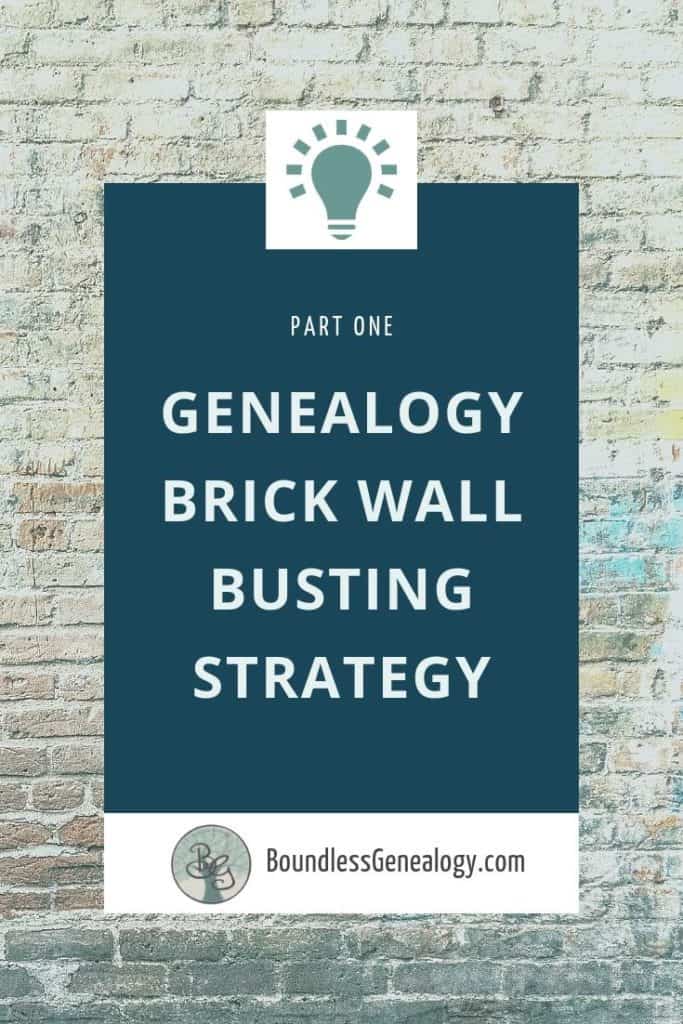

Great post! I might add a “to do” section because the analysis often sparks ideas for future research.
Absolutely! Those ideas for future research that are sparked as you re-evaluate each document are so important. I did cover this in the video but thank you for pointing out that I neglected to add it to the post. I will add it now!
Thanks for reading,
~Melissa